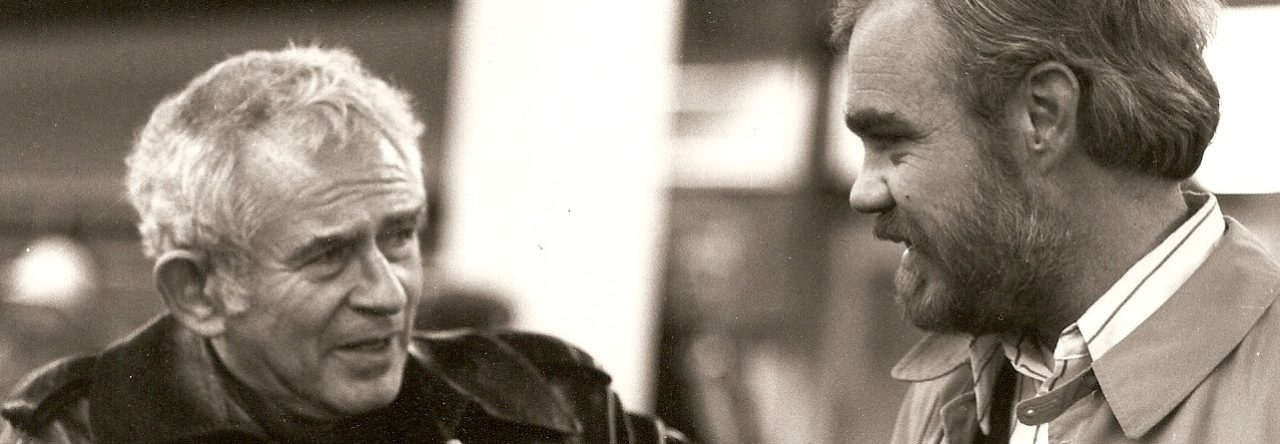Norman Mailer was the most famous writer of his generation. People who never read a word that he wrote knew who he was, whether because of his fame as a novelist or journalist, or his notoriety because of his many marriages and affairs, his rivalries with other writers (Gore Vidal, especially), his appearances on television, his campaign for mayor of New York City, his prominence as the leading public intellectual of his time.
J. Michael Lennon was authorized by Mailer and the Mailer estate to write his biography, and as such, had access to family and friends, and to unpublished documents, notably Mailer’s letters (Lennon has edited the letters for publication by Random House, Mailer’s longtime publisher). He has interviewed more than 80 people for this biography, but most important of all, he knew Mailer for decades before the latter’s death in 2007.
Norman Mailer: A Double Life reflects Mailer’s dual identities: journalist and activist, devoted family man and notorious philanderer, intellectual and fighter, writer and public figure. Mailer himself said he had two sides “and the observer is paramount.” Readers of Lennon’s biography may find this self-assessment to be debatable.
Mailer was a two-time Pulitzer Prize winner (The Armies of the Night and The Executioner’s Song). His first book, The Naked and the Dead, was an enormous best-seller, and Mailer would have ten more bestsellers, both fiction and non-fiction. He knew many of the most famous writers of his generation — Capote, Didion, Styron, James Jones, Lillian Hellman, Bellow, Vidal, Tom Wolfe — and quarreled with several of them. He was married six times, had nine children, and had numerous affairs. He stabbed his second wife, and later championed a convict writer (Jack Henry Abbot) who, on his release from prison, stabbed an innocent man to death. Mailer co-founded The Village Voice and wrote a column for that paper in the late 1950s. He ran for mayor of New York City in 1969 (with Jimmy Breslin as his running mate), a campaign that was as entertaining as it was quixotic. He was a prominent opponent of the War in Vietnam, and bete noire of the women’s movement. He was one of the leading voices of the New Journalism of the 1960s. He obsessed about the Kennedy assassination and the suicides of Marilyn Monroe and Ernest Hemingway, and wrote often about all three of these iconic figures. He was perhaps the most provocative chronicler of the second half of the twentieth century, both as journalist and novelist.
Lennon shows Mailer’s self-conscious effort to create an identity for himself, one that evolved constantly, based on an idiosyncratic amalgam of Marx, Freud, Wilhelm Reich, and dollops of whatever he gathered from Tolstoy, Dostoevsky, Lawrence and Stendhal, among others. Few people have ever tried on as many personas as Mailer — fighter, lover, philosopher, novelist, journalist, biographer politician, Jew, American. Whether you admired him or loathed him, he was remarkable and unique. His was an astonishing life.
Table of Contents
- Prologue: The Riptides of Fame, June 1948
- Chapter 1: Long Branch and Brooklyn
- Chapter 2: Harvard
- Chapter 3: The Army
- Chapter 4: Paris and Hollywood: Prominent and Empty
- Chapter 5: The Deer Park
- Chapter 6: General Marijuana and the Navigator
- Chapter 7: A Felonious Assault and An American Dream
- Chapter 8: Third Person Personal: Armies and After
- Chapter 9: Politician to Prisoner
- Chapter 10: The Turn to Biography
- Chapter 11: Death Wishes: Gilmore and Abbott
- Chapter 12: Pharaohs and Tough Guys
- Chapter 13: An Unfinished Cathedral: Harlot’s Ghost
- Chapter 14: A Merry Life and a Married One
- Chapter 15: Old Freighter, Uncertain Sea
